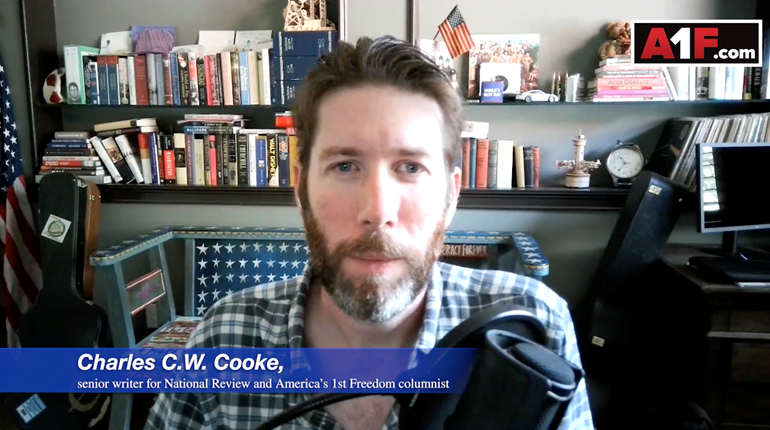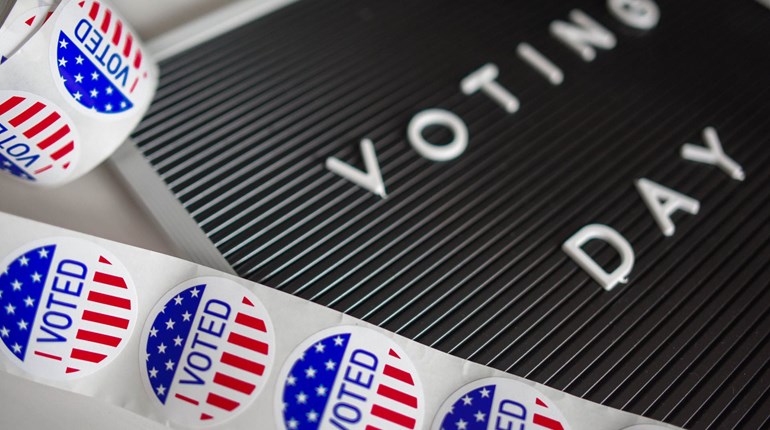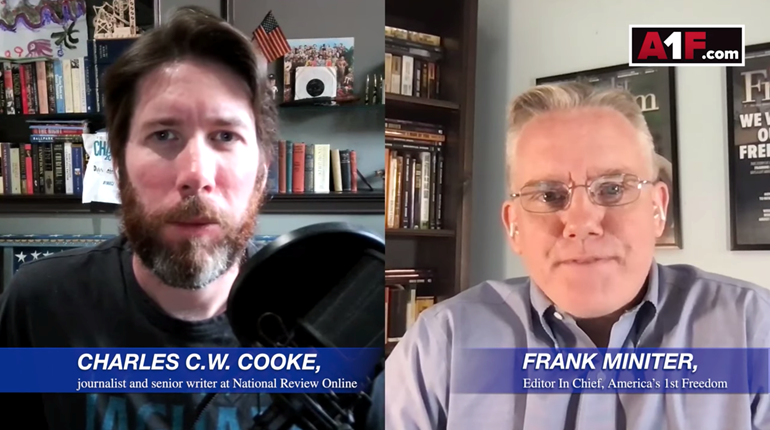
Aware, perhaps, that their long and absurd attempt to rip the Second Amendment out of the U.S. Constitution has failed, opponents of the individual right to keep and bear arms have lately been using a different tactic: good, old-fashioned social shaming.
In The Atlantic, the unfailingly anti-firearm journalist David Frum noted that the gun owners of today are “more likely to be people of color and more likely to be women” than ever before, and that, contrary to the cartoon that is often contrived in the press, “they are not buying guns to join a race war, or to overthrow the government, or to wait for Armageddon in a bunker stocked with canned beans,” but “to deter a burglar or an assailant, should one come.”
And that, Frum concluded, is why there is a problem?
Wait, what?

Evidently, Frum is disappointed by this shift, which is why, in his own words, he has resolved to abandon the “legalistic approach to restricting gun ownership” on which the gun-control movement has relied for so long, and to make “progress” instead by “persuading Americans to stop, one by one by one.” Americans, he argues, “used to smoke cigarettes on airplanes,” “once thought drunk driving was funny” and “long regarded spousal abuse as a private matter between husband and wife.” But “they changed,” and, in his view, “they can change on gun ownership too.” Going forward, he concludes, the gun-control movement must try to convince “ordinary, ‘responsible’ handgun owners that their weapons make them, their families, and those around them less safe,” so that, “emancipated from the false myth of the home-protecting gun,” they will support the sort of draconian gun-control that Frum believes America needs.
Well, challenge accepted! I write a lot about the importance and history of the right to keep and bear arms—what Frum calls the “legalistic approach”—as well as about how it affects the law, the courts and our politics, but, because they are so clearly not a problem in America, I tend to write less about gun owners themselves. If this is where the debate is going, though, that will have to change. There are at least a hundred million gun owners in this country—a number that is growing fast—and there is no reason whatsoever that they should consent to be cast as a bunch of irrational Yosemite Sams who, in a vain attempt to protect themselves from harm, end up becoming as much of a danger as the criminals they fear.
And if you don’t think that’s where this endeavor will end up ... well, just read Frum’s vision for yourself. In his own words, David Frum believes he is engaged in a “moral reckoning,” and that, by talking the “barbarians” out of the “savage custom” in which they are engaged, he is not only preventing responsible Americans from randomly “open[ing] fire on one another at backyard barbecues,” he is saving “civilization” itself.
The title of Frum’s piece in The Atlantic magazine is “Responsible Gun Ownership Is a Lie,” which not only sums up the game he is playing here, but also neatly highlights the imbalance on display. Except insofar as they object to his desire to use the government to enforce his views, gun owners don’t care too much about the David Frums of the world. If he doesn’t want to own a gun, that’s fine; indeed, if that’s what he thinks, he shouldn’t own one! The Frums of the world, by contrast, hold the rest of us in open contempt.
And they want the government to hold us in contempt, too.
At various points in his essay, Frum insists that he merely hopes to start a movement that will “persuade Americans to give up their guns,” but his dripping hostility and bizarre use of analogies telegraphs that, really, he wishes to bludgeon them. That the central comparison in Frum’s piece is between gun ownership and drunk driving is instructive, in that, far from demonstrating the importance of persuasion, it hints squarely at the use of government force. (It also makes no sense: Owning a gun is equivalent to owning a car, not to abusing that car.) As Frum himself notes, “drunk driving has been illegal in the United States since automobiles became commonplace,” but it was only really limited during the 1980s, at which point the laws against it started to be enforced. His other two analogies suffer from the same problem—apparently, to Frum, gun owners are like both domestic abusers and people who smoke cigarettes on planes. Naturally, we do not try to “persuade” domestic abusers or people who smoke on airplanes; we arrest them. When Frum writes, “don’t wait for the law,” he couldn’t be clearer in what he is suggesting: Do it by choice, or do it after a knock at the door.
David Frum believes he must talk the “barbarians” out of the “savage custom” of gun ownership in America.
At the heart of Frum’s proposal lies the same presumption that undergirds pretty much all attempts to ostracize gun owners: Namely, that gun owners are irrational, counterproductive, selfish and driven by fear of the unknown. But this is nonsense. Guns are tools, not totems, and they are accorded a special place within our law because they are the most-effective means by which most Americans are able to exercise the real right that is at stake here: self-defense. It is, of course, extremely silly to draw individualized conclusions about public policy from aggregated national statistics—the fact that it is mostly safe on the Upper East Side of New York City tells us nothing about the threats that people face in Newark—not merely because individual rights do not work like that, but because individual threat-assessments do not, either. There really are just two options on offer here: We can either trust individuals to decide whether they need firearms for their protection, or we can outsource that decision to others—whether those “others” be elected governments or the police. It should come as no surprise whatsoever that Americans insist that they, not a third party on whom they may or may not be able to rely, should make that call.
Naturally, Frum does not care about any of this. Instead, he sees the debate as one of accumulated averages—within which, your life and the lives of your loved ones are mere numbers on a page. In and of itself, this is impressively callous. But he also fails to engage seriously with the numbers, which do not show what he thinks they show. “Two-thirds of American gun buyers,” he writes, “explain that they bought their gun to protect themselves and their families.” But this, he says, is an “illusion” that renders “the gun you trust against your fears” as “a lie,” because, while “estimates of defensive gun use vary wildly, from as few as 60,000 incidents a year to as many as 2.5 million,” the “higher estimates are distorted by a crucial error: They rely heavily on self-reporting by gun owners themselves, with a huge risk of self-flattering bias.”
Even if this were true (which it is not), and even if it were a useful way of determining individualized danger (which it is not), these numbers alone make a pretty good case for private gun ownership. Frum is getting his numbers from a 2013 paper titled Priorities for Research to Reduce the Threat of Firearm-Related Violence, and, in the same year as it was published, 11,208 people were murdered with firearms, while 21,175 people committed suicide using guns. It does not take a mathematician to notice that the lowest number in Frum’s range, 60,000, is around double the number of people who died as a result of firearms — and, indeed, that because suicides are not at all the same thing as crime, for all practical purposes it is six times higher. In effect, what Frum is demanding here is that the 60,000 to 2,500,000 people who defend their lives each year with guns happily give them up so that ... well, so that the people who committed those murders in other places will have an easier time of it, and so that the people who killed themselves will choose to end their lives by other means going forward. It is irrational.
Frum’s other statistical claim—that there is a link between Americans having “stocked up on guns” in 2020 and the growing levels of crime across the country—is equally silly. For a start, studies such as the one conducted this year by Julia Schleimer and others for Injury Epidemiology, found that, instead of lazily blaming law-abiding citizens who purchase firearms, “we need to be looking at other factors, like job loss, economic change, the closure of schools and community organizations and nonprofits, and civil unrest.” “We found no relationship,” the study’s authors concluded, “between state-level excess purchasing and non-domestic firearm violence.” Second, if Frum would bother to look at the numbers, he would find that the last 30 years have been marked by a massive increase in the number of guns in circulation in America, by a loosening of many laws relating to firearms, and by an extraordinary drop in crime—including crime committed with firearms.
Alas, that he seems neither to know nor care about any of this is entirely predictable, for what comes through more than anything in Frum’s proposal is his almost total inability to understand anyone whose life is not precisely the same as his own. Frum lives in Washington, D.C., a big, police-heavy city; he spends most of his time in well-secured, low-crime areas; he is at no risk from wildlife or a breakdown in social services; he understands that the biggest threats to his life come not from the prospect of a “burglar or an assailant,” but from random acts of violence; and he would likely not know which way around to hold a firearm if one were handed to him. Taken together, these are great reasons for Frum to refrain from buying or carrying a gun. They are not great reasons for him to expect people who live in thoroughly different circumstances to make the same call, nor to lambast those people as “barbarians” in need of civilizational aid.
At one level, one must feel a little sorry for the gun-control movement. For years and years, they worked around the clock to cast gun-owners as outré, mostly white, mostly male extremists and then, at the exact moment that race and sex became national obsessions, women and minorities decided to join the gun-owners’ ranks en masse and to render that specious line of argument about as relevant as a transistor radio. As Frum himself concedes, the average first-time buyer is now “different from those of years past,” and so his argument has to be, too. And so, like magic, it is. Once, we were told that the restoration of the Second Amendment was achieved by a tiny, ugly faction. Now, it is because 100 million Americans—people who get up every day and go about their lives without incident—are “deceiving ourselves” into thinking that we are substantively different from criminals.
Well, this shift won’t work. It won’t work because it has no basis in reality, as the numbers show. It won’t work because it demeans 100 million people by casting them as duped automatons. It won’t work because it seeks to take a right that Americans have personally enjoyed for centuries and hand it to people who sit all day in sterile offices. And it won’t work because, whatever our vainglorious political journalists might believe, the good gun owners of this country of ours are not wife beaters or drunk drivers or barbarians or savages or randomized barbecue murderers; they are responsible Americans. And I, for one, would trust them with my life.
This appeared in the February 2022 issue of America's 1st Freedom.

































